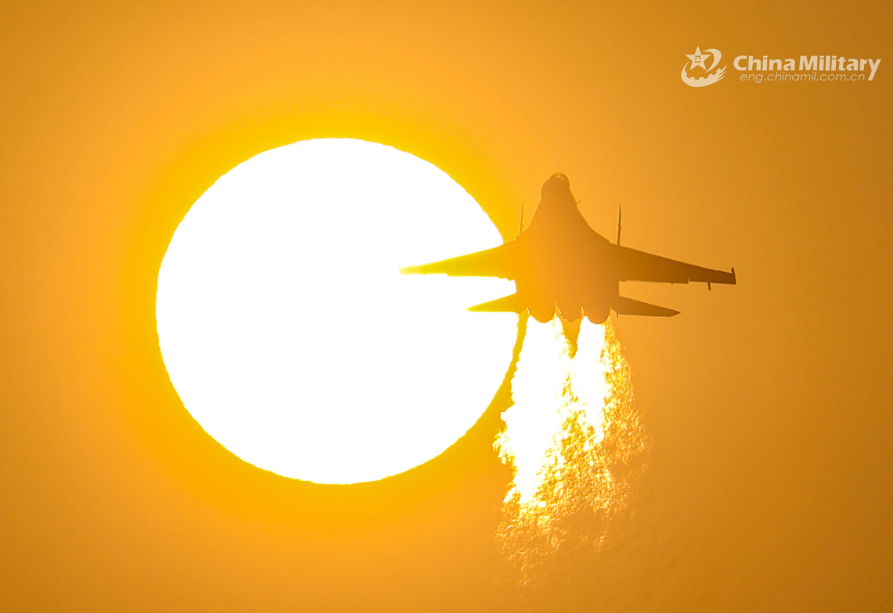
Dialing back Western Pacific freedom of navigation operations and military flights runs a “very high risk” of sending the wrong message to Beijing about U.S. intentions in the Indo-Pacific, security experts said Wednesday.
“Beijing would see this as… our hard-line worked,” Josiah Case, a research analyst specializing in China at the Center for Naval Analyses, said Wednesday at the Brookings Institution.
By publicly announcing its intercepts at sea and in the air, Beijing is sending messages not only to the United States and its allies and partners but also to the Chinese public. The Chinese Communist Party “is really concerned in sending the right message to its people,” Case said.
That message often includes pledges to “resolutely safeguard China’s sovereignty and security,” as it did when a Chinese warship cut across the bow of guided-missile destroyer USS Chung-Hoon (DDG-93) while transiting the Taiwan Strait with a Canadian frigate in June.
The Defense Department said the change of course that brought the two vessels within 150 yards of each other, as captured in a video, showed the Chinese were operating in “an unsafe manner.”
In 2018, a PLAN destroyer carried out a series of “increasingly aggressive maneuvers” within 45 yards of USS Decatur (DDG-73). The American destroyer was operating near a recently militarized artificial island created by the Chinese in the Spratlys in 2018.
By claiming to expel ships or aircraft from territory it claims, the CCP is resurrecting memories of its “century of humiliation” that ended with Communists taking power in 1949, Case said.
Roderick Lee, director of research at the China Aerospace Studies Institute at the Air University, said operations by other nations close to its shores is a “very, very historically sensitive topic for China.” He cited American air reconnaissance missions along the coast in the late 1940s and Taiwan’s flying reconnaissance missions from the island to Beijing as examples the CCP can use in denouncing American and others activities at sea or in the air.
“China sees this [flights in international air space near its borders] as U.S. reconnaissance operations,” Lee said.
Beijing’s views haven’t deterred U.S. military flights in international air space as a matter of policy. He added, “we have regular air presence in the first island chain” that Beijing monitors.
Case said the message in the at sea and air intercepts is “China was exploited and repressed [and those Western powers] are still trying to repress” its people. “The CCP deserves to be in charge” because it protects the nation’s sovereignty.
The 2023 incidents “are not the first time the PLA [People’s Liberation Army] has bas behaved in an unprofessional manner,” he said at the Brookings Institution event.
Whether the intercepts have actually increased is a difficult question to answer, both said. China has established a blue-water navy, built a modern air force and created better air defense warning systems, which could explain the number of U.S. reported incidents, both said. Lee said the Chinese are conducting the intercepts on “an increasingly regular basis.”
“We’re not seeing the full scope” of the intercepts, he added.
What is different, Case said is the incidents “are being talked about in the public domain by both sides” in “a battle for the narrative.”
“The Chinese have gotten a lot better” at conducting the intercepts, from the professionalization of pilot training to better technology and developing doctrine for “non-military activities.” Lee said the doctrine calls for the Chinese aircraft to “push out” the intruder using chaff or maneuver to do it when ordered. He contrasted that to the 2001 incident when a Chinese fighter collided with a Navy EP-3 Aries, killing the Chinese pilot and forcing the P-3 to land on Hainan Island. The signals surveillance aircraft was operating 70 miles off the Chinese coast. He termed the collision “pilot error.”
Increased Chinese proficiency has allowed Beijing to up its pressure on transits, Lee added. They also are in no hurry to establish direct communications with the United States military to prevent escalation after an incident. The Chinese believe each side understands what the other is doing,” Lee said. “They think we’re really good at non-verbal communication” in those situations.
In space, there is no defined territory in the competition between the United States and China or anyone else, Robin Dickey, space policy and strategy analyst at Aerospace Corp., said. Space “is open to all countries, all actors.”
Yet at the same, there are no commonly agreed upon “rules of the road,” providing “norms and governance” to cover activities in space, Dickey said. For space, “the biggest trend line is the [increasing] number of satellites and actors [including private companies].”
While incidents in space “can be happening more and more” with objects including debris colliding with military or civilian satellites and space stations, there is no direct communication between nations to de-escalate. To connect one operator to another would require a phone call or sending an email, even for the military, Dickey said. Like incidents at sea and in the air, “very often China doesn’t answer the phone.”
“If we can’t de-conflict the easy cases, how are we going to de-escalate the hard cases,” he said.
Complicating discussions about space, Dickey said, “you can’t know what’s in a satellite” whether it has dual-use technology. She said it was possible for a maneuverable satellite sent up to remove debris could also be used to disable or destroy another satellite.





